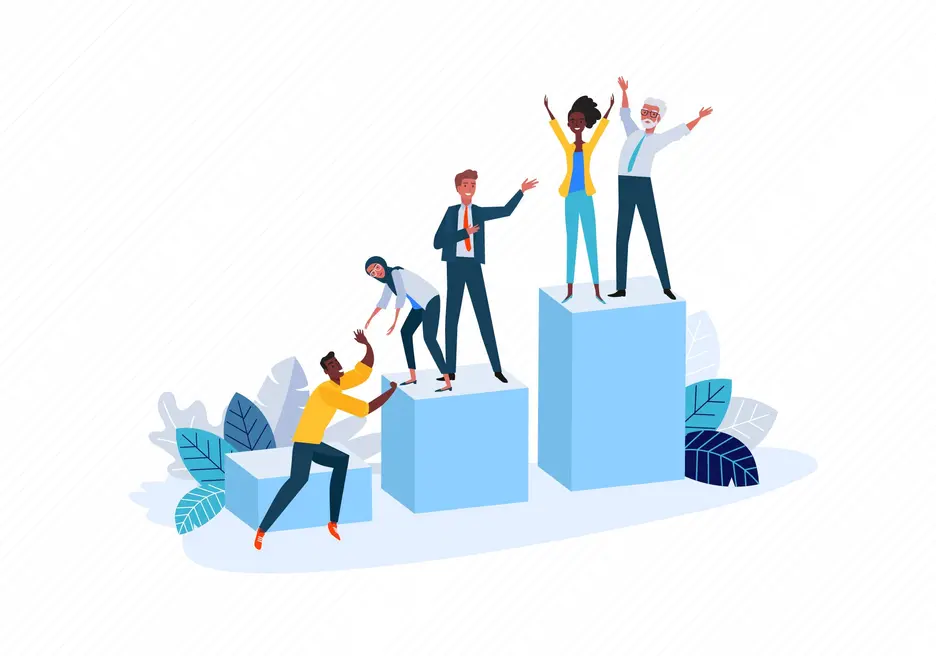For the last few years, the conversation around diversity, equity, inclusion, and belonging efforts in the workplace has been (finally) intensifying. Bringing this topic from the fringes to forefront is promising, but true change requires action—and an annual DEI-focused all-hands or a training on workplace microaggressions is simply not enough to build a genuinely inclusive culture.
“There will never be quick fixes for unconscious bias, or shortcuts to genuinely inclusive cultures,” said Daisy Auger-Dominguez, the Chief People Officer at VICE Media. “We have to have conversations constantly, and challenge our assumptions about how inclusive we are as an organization all the time. It’s all part of a process that helps us build that muscle. And the only way we build the muscles is by learning and practicing and sometimes making mistakes.”
Leaders need to drive DEI&B in every aspect of business, from hiring and onboarding, to communication and management practices, and everything in between.
Building an inclusive workplace is an ongoing, iterative process. Here are five places you can deliberately imbue these values in order to create a stronger, happier, more innovative team.
Job descriptions.
A job description is often a person’s first interaction with your company, so write them with precision. Use inclusive language and avoid gender-coded language like “rockstar,” “dominate,” and “aggressive.” If you’re not sure what words and phrases to avoid, run your current job descriptions through this gender decoder that checks for masculine-coded and feminine-coded words.
Additionally, avoid jargon and nice-to-haves in your job descriptions. These can deter young people and women from applying, as studies show that while men apply to jobs when they meet 60% of the requirements, women only apply when they meet 100%.
Finally, emphasize your company’s commitment to DEI by including a statement on company values and highlighting benefits like parental leave or mental health resources.
Recommended template: Develop an Inclusive Job Description
Employee resource groups.
Organize employee resource groups, or ERGs, for groups of any shared identity—this can mean anything from race, gender, or sexuality, to being parents, new grads, or international team members. Not only do ERGs foster strong bonds between team members, but they can also serve as a sounding board for leadership when making decisions or implementing new processes.
Keep track of the ERGs that exist within your workforce, and set recurring meetings with leadership so each ERGs can weigh in on relevant issues and voice their needs directly to decision-makers. If ERGs stay siloed or feel placated, it can breed deeper frustration, so be transparent about what is realistic in the short and long term.
Recommended template: Improve Support for Marginalized Employees
Meetings, brainstorms, and other collaborative forums.
Without thoughtful structure and constraints, collaborative forums like meetings, brainstorms, and team check-ins can be breeding grounds for exclusion, groupthink, and unconscious bias. To avoid these harmful dynamics, keep meetings small when possible: Groups of eight or fewer participants not only keep everyone focused and diminish public speaking anxiety, but they also create healthy social pressure to contribute, allowing leaders to take full advantage of the group’s cognitive diversity.
It’s also important to optimize these sessions for a hybrid team—in other words, ensure all collaboration is as accessible for distributed workers as it is for team members who work in the office. If you haven’t already, implement tools that your team can use for asynchronous collaboration, and leave time for team members in all time zones to contribute. In some cases, solo brainstorming before bringing everyone’s ideas together can also weed out confirmation bias and anchoring bias.
Recommended templates: Transform DEI for Remote Work, Evaluate Feedback Mechanisms
Benefits and perks.
In the long run, benefits that support team members’ lives outside of work will always boost retention, productivity, or motivation more than free snacks and a ping pong table in the break room will. Robust physical and mental health care and parental leave are must-haves for any inclusive workplace.
Katelin Holloway—a founding partner at venture capital firm Seven Seven Six, the former VP of People and Culture at Reddit, and one of Balloon’s Flight Template authors—is a long-time champion for longer parental leave and increased mental health care.
“Culture is the number one thing that has made and broken companies [during the pandemic],” Holloway said. “Companies that did not spend time focusing any amount of energy or resources on building intentional cultures collapsed, and the ones who were actively supporting people through trying times are the companies that came out the other side even stronger.”
If you don’t know what you team members need to support their private lives, ask them in a safe, anonymous forum. Your employees know best what they need to do great work; as a leader, it’s your job to provide it.
Recommended templates: Manage for Inclusion, Motivate Teams: Autonomy
Social media.
The Internet is forever, so while your company's Twitter account might have a breezy personality, stay alert while drafting copy. On all corporate social media, take care to avoid digital blackface or other insensitive flavors of so-called humor. Impact matters more than intent.
It’s also helpful to build a flexible social calendar, so if world events or other context render a scheduled post ill-timed, you can pause or adjust your content to stay sensitive to issues outside of your organization.
Recommended template: Content Brainstorm
